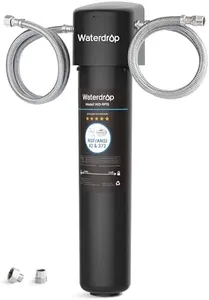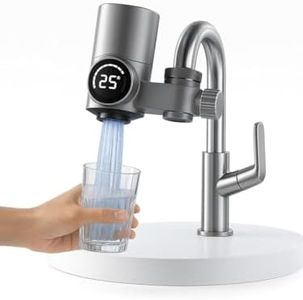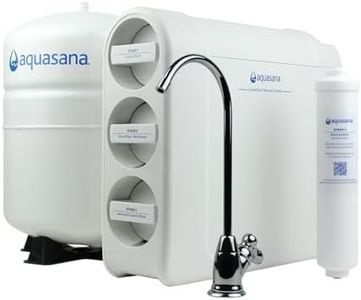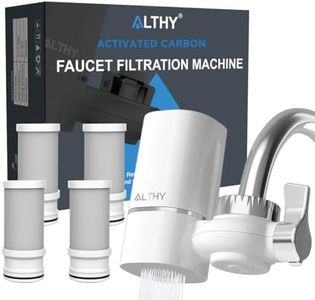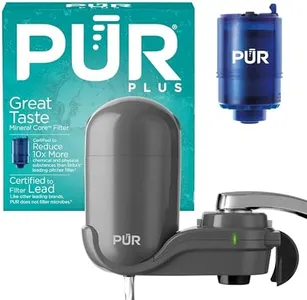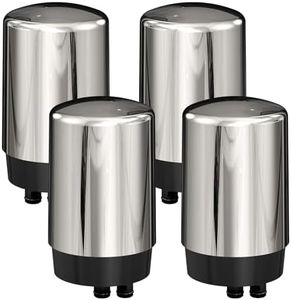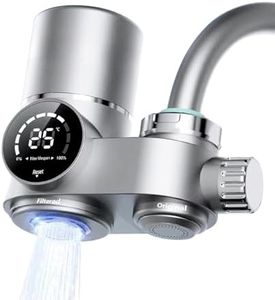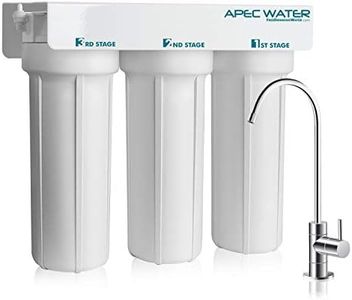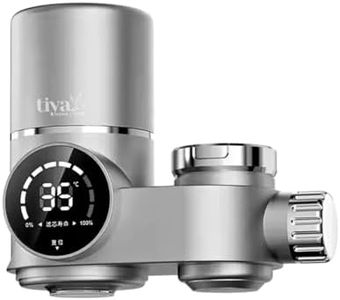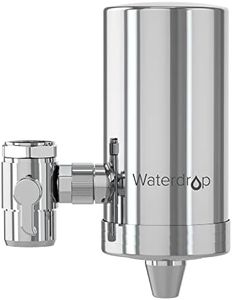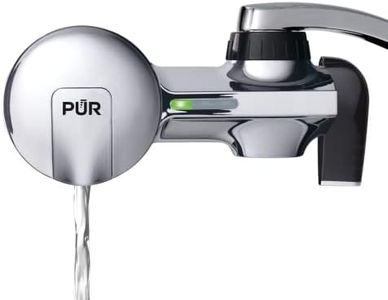We Use CookiesWe use cookies to enhance the security, performance,
functionality and for analytical and promotional activities. By continuing to browse this site you
are agreeing to our privacy policy
10 Best Faucet Water Filters
From leading brands and best sellers available on the web.Buying Guide for the Best Faucet Water Filters
Choosing a faucet water filter can sometimes be overwhelming given the wide range of options available, but focusing on your personal water needs and daily habits will help you find the right fit. Consider the quality of your tap water, the amount of water your household usually consumes, and any specific water concerns such as chlorine taste, lead, or sediment. By understanding key features and how they relate to your usage, you can confidently select a faucet filter that will effectively improve the taste, appearance, and safety of your drinking water.Filtration CapabilityFiltration capability refers to what contaminants and impurities the filter can remove from your water. This is vital because your local water source may have different issues like chlorine, lead, pesticides, or microplastics. Filters may specify removing just chlorine and improving taste, or they may claim to reduce heavy metals and other hazardous substances. Simpler filters generally make water taste better while advanced ones tackle health-related concerns. To pick the right filtration capability, you should check your water quality report or consider any specific concerns (such as living in an area with older pipes, which may carry lead) and match those needs to the capabilities listed by the filter.
Filter Life and Replacement FrequencyFilter life is the amount of water a filter can process before it needs to be replaced, usually measured in gallons or months. This matters because more frequent replacements mean more maintenance and ongoing costs. Filters can range from around 100 gallons (a couple of months for a small household) up to 400 gallons (lasting several months or in a bigger household). Lighter users or those only filtering drinking water may be fine with a shorter filter life, while families or heavy users should look for longer-lasting filters to reduce hassle and replacement frequency.
Flow RateFlow rate indicates how quickly water comes out after passing through the filter, typically measured in gallons per minute. This matters because some filters can make your faucet run much slower, which could be frustrating in a busy kitchen or when filling pots. Lower flow rates (around 0.5 gallons per minute) are common for more thorough filtration but may slow you down, while higher flow rates are more convenient but may not filter as thoroughly. If speed matters to you, or you have a large household, look for higher flow rates; if maximum filtration is the priority, a slower flow rate is acceptable.
Installation and CompatibilityThis spec covers how easy it is to attach the filter to your faucet and whether it’s compatible with the fixtures in your kitchen. Some filters are designed for standard faucets and can be installed with simple tools or even by hand, while others may need adapters or won’t fit unique faucet shapes (like pull-out or spray-type faucets). To avoid disappointment, check the compatibility list of the filter and how it installs, and pick a model suited to your tap style and your comfort with DIY tasks.
Filter Change IndicatorA filter change indicator is a feature that alerts you when it’s time to replace the cartridge. This is important because using a filter past its effective life means poorer water quality. Some models have a simple mechanical indicator, a color-changing dial, or even electronic alerts. If you prefer not to keep track of replacement dates or usage, a filter with a clear indicator will make maintenance simple and ensure ongoing water quality. If you’re organized and don’t mind tracking replacements manually, you may not need this feature.
